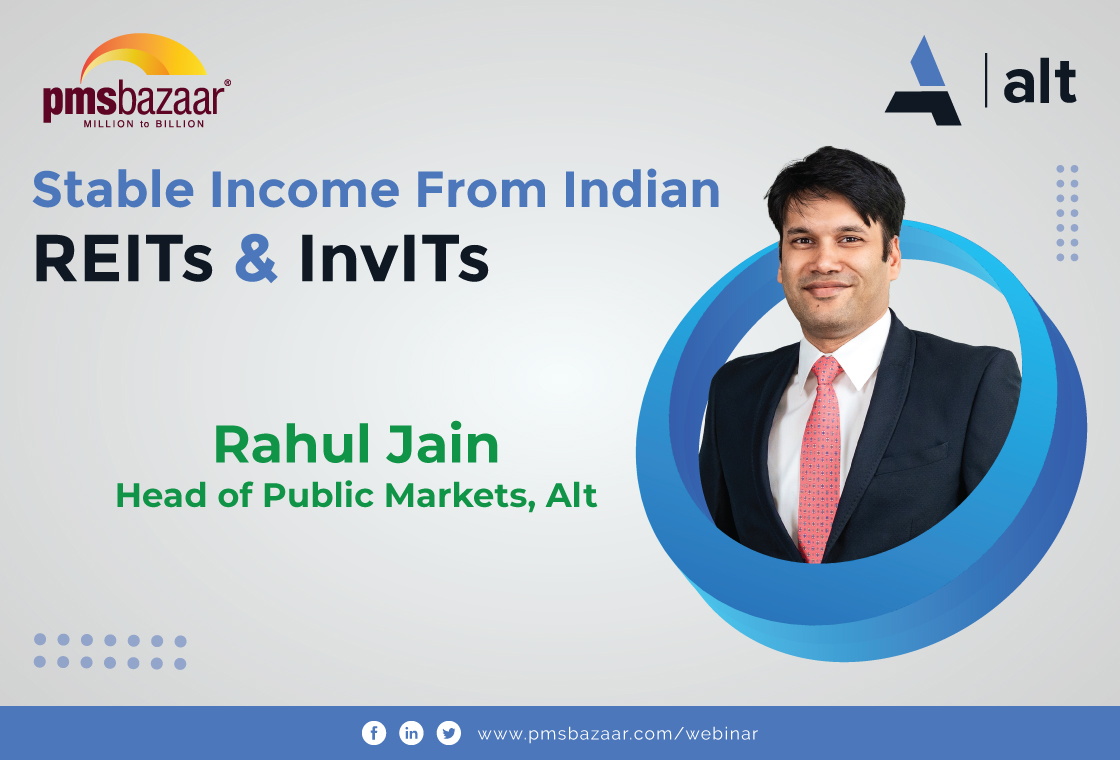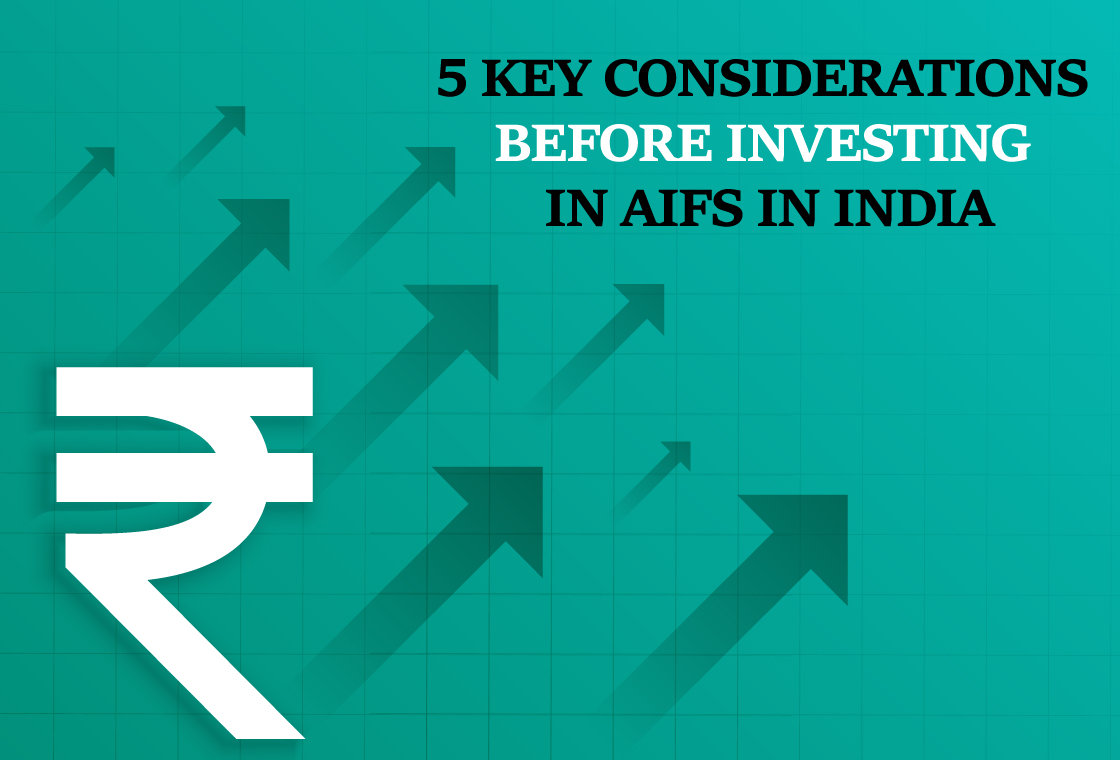PMS Bazaar recently organized a webinar titled “The Role of Private Credit in Portfolio Diversification,” featuring Amit Kansal, Head, Alternate Investments (Fixed Income), Aditya Birla Sun Life AMC. This blog covers the important points shared in the webinar.

The webinar blog covers insights from Kansal, including understanding private credit, its global and Indian growth, investor appeal, its role in India’s economic expansion, and how private credit supports acquisition financing, private equity exits, and opportunistic capital. Kansal emphasizes the strategic importance of private credit for flexible, tailored financial solutions.
Key aspects covered in this webinar blog are
- Understanding private credit
- Global growth of private credit
- Private credit in the Indian context
- Why investors are drawn to private credit
- India’s growth story and private credit’s role
- The growing role of private credit
- Facilitating private equity exits
- The importance of opportunistic capital
- The premium on private credit
Understanding Private Credit
Kansal started by explaining that private credit is a crucial concept that is often misunderstood due to its complexity. He emphasized that it refers to tailored financial solutions crafted between two parties, as opposed to the standardized frameworks typical of public markets. Public markets operate within predefined rules and customs, leaving little scope for customization. Kansal explained that private credit thrives on flexibility, offering bespoke solutions that cater to unique transactional needs, which distinguishes it from its public counterpart.
Moreover, Kansal pointed out that the adaptability of private credit allows it to address challenges that public markets cannot, making it an increasingly relevant financial instrument. Its non-public nature is reflected in its name, signifying exclusivity and a focus on meeting specific requirements. This customized approach, according to Kansal, has made private credit a preferred choice for entities seeking alternatives to rigid public market structures.
Global Growth of Private Credit
The global private credit market has grown significantly over the past decade, driven by events like the 2008 GFC. Kansal explained that the collapse of Lehman Brothers led to regulatory changes and risk aversion, creating a financing gap that private credit filled, especially in the U.S. Since 2007, the market has expanded tenfold to $2.3 trillion, with projections to exceed $3.5 trillion in the next few years, reflecting a compound annual growth rate (CAGR) of 18%. This growth highlights the adaptability of private credit in meeting evolving financial needs.
Private Credit in the Indian Context
In India, private credit's rise was influenced by financial disruptions like the 2018 IL&FS crisis and the collapse of Yes Bank and DHFL, stated Kansal. These events exposed the limitations of traditional finance, leading to the rapid growth of private credit. Deal flows have increased from $2.4 billion in 2018 to $6 billion in the first half of this year, marking a fivefold annual increase. While direct lending dominates global markets, this segment is still emerging in India, driven by demand for alternative funding solutions due to the challenges faced by traditional institutions.
Why Investors Are Drawn to Private Credit
Private credit offers attractive returns with lower volatility, making it an appealing investment. Kansal explained that in the U.S., private credit yields about 10.8%, far surpassing the 2% returns of treasury instruments. When considering capital appreciation, private credit can rival equity returns, appealing to investors seeking stability.
In India, private credit has delivered 17-18% returns in recent years, outperforming equities, which have averaged 13%. Kansal highlighted its lower volatility, especially during economic uncertainty. For instance, during the 2008 GFC, private credit fell 8%, while equities dropped 46%. Similarly, during COVID-19, private credit saw a 5% decline, compared to 20% in equities. This stability, combined with strong returns, makes private credit a reliable option in volatile markets.
India’s Growth Story and Private Credit’s Role
India's rapid growth presents huge opportunities for private credit. Kansal noted that achieving a $5 trillion GDP by FY36 will require significant private capital expenditure (CapEx). While India's growth has been consumption-driven, there's a shift toward investment-led growth, increasing demand for credit. CapEx boosts the economy, and the Gross Fixed Capital Formation (GFCF) has risen from 29% to 32%, with projections to hit 34%. Comparing India’s 55% credit-to-GDP ratio to China’s 183% and South Korea’s 100%, Kansal sees potential for a $10 trillion credit market benefiting all credit classes, especially private credit.
The Growing Role of Private Credit
Kansal highlighted that acquisition finance is one of the most prominent areas in which private credit is making an impact. Unlike banks and Non-Banking Financial Companies (NBFCs), which are restricted from financing the acquisition of shares in India, private credit plays a critical role in this space. This is particularly evident in the country’s ongoing merger and acquisition (M&A) activity, where private credit is used to finance various deals.
Additionally, bridge financing is another area where private credit shines. Kansal explained that private credit can provide temporary financing to businesses undergoing significant transitions, such as selling off business units or assets. In these cases, private credit offers a quick and flexible solution to meet immediate financial needs.
Facilitating Private Equity Exits
A critical function of private credit is its involvement in facilitating private equity exits. According to Kansal, the data reveals that less than 50% of private equity exits in recent years have been through IPOs or secondary market sales. The remaining exits are typically through strategic buyouts or promoter buyouts. In these instances, private credit functions similarly to acquisition finance, providing the necessary capital to complete the transaction.
The Importance of Opportunistic Capital
Opportunistic capital is another important aspect of private credit, especially in the Indian market. Kansal noted that this type of capital is often utilized in cases involving family settlements, promoter acquisitions, or funding temporary cash flow mismatches in businesses with strong operational leverage. The flexibility of private credit allows businesses to tap into much-needed capital when traditional financing options are unavailable or unsuitable.
The Premium on Private Credit
When questioned about why businesses are willing to pay a premium for private credit, Kansal explained that private credit solutions often act as quasi-equity. They allow businesses to avoid equity dilution, providing a more cost-effective alternative to raising capital through traditional equity markets. In cases where the business is looking to maintain its control, private credit offers a viable solution by providing funding at an IRR (Internal Rate of Return) typically ranging from 15% to 17%. For many promoters, this is a more attractive option than raising equity, which may involve higher costs.
Amit Kansal covered all the topics mentioned above in-depth and answered questions from the audience toward the end of the session. For more such insights on this webinar, watch the recording of this insightful session through the appended link below.
Get access to rich data and analytics of PMS & AIF by subscribing to us. Join the 75000+ investors & experts: Subscribe NOW
Recent Blogs
.jpg)
Passively Active Investing — A Modern Investor’s Lens on ETF-Based PMS
PMS Bazaar recently organized a webinar titled “Passively Active Investing — A Modern Investor’s Lens on ETF-Based PMS,” which featured Mr. Karan Bhatia, Co-Founder and Co-Fund Manager , Pricebridge Honeycomb ETF PMs. This blog covers the important points shared in this insightful webinar.

Spot the Trouble: Red Flags in Equity Investment Analysis
PMS Bazaar recently organized a webinar titled “Spot the Trouble: Red Flags in Equity Investment Analysis,” which featured Mr. Arpit Shah, Co-Founder & Director, Care Portfolio Managers. This blog covers the important points shared in this insightful webinar.

Long-Only AIFs Rebound Sharply in October; Long-Short Strategies Lag Despite Lower Volatility
106 long-only AIFs averaged 3.68% vs 32 long-short AIFs at 2.7%; only 24–31% of funds beat key indices

Markets log strongest monthly gains in 7 months; PMS performance turns near-uniform in October
Nifty 50 TRI gained 4.62%, BSE 500 TRI rose 4.27%; 415 of 427 equity PMSes ended positive

How SMEs are Shaping India’s Investment Landscape?
PMS Bazaar recently organized a webinar titled “How SMEs are Shaping India’s Investment Landscape?” which featured Mr. Shrikant Goyal, Fund Manager, GetFive Opportunity Fund.

Stable Income from Indian REITs and InvITs
PMS Bazaar recently organized a webinar titled “Stable Income from Indian REITs and InvITs,” which featured Mr. Rahul Jain, Head of Public Markets, Alt.

5 Key Considerations Before Investing in AIFs in India
Alternative Investment Funds (AIFs) have emerged as a compelling option for sophisticated investors seeking diversification and potentially superior returns. But venturing into AIFs requires a clear understanding of their unique characteristics that go beyond simply knowing what they are and their categories.

How AIF can help in diversification?
Traditionally, Indian investors have relied on a mix of stocks and bonds to build their wealth. While this approach offers diversification, it can still leave your portfolio vulnerable to market fluctuations. Enter Alternative Investment Funds (AIFs), a dynamic asset class gaining traction for its ability to unlock diversification beyond the realm of conventional options.

